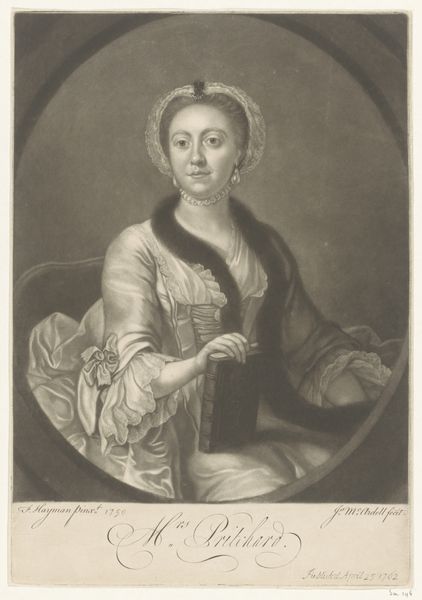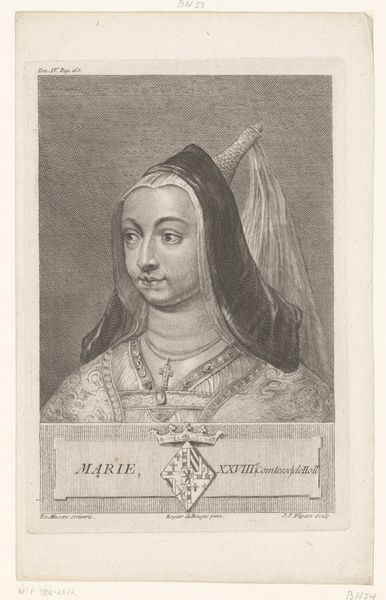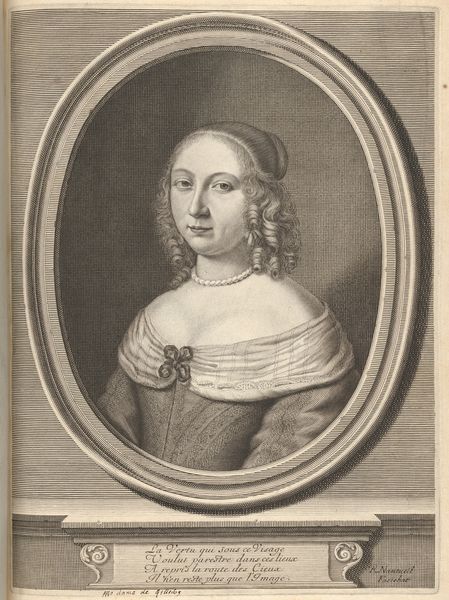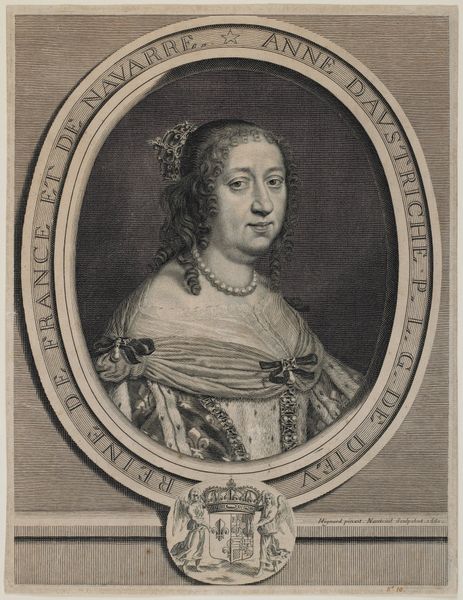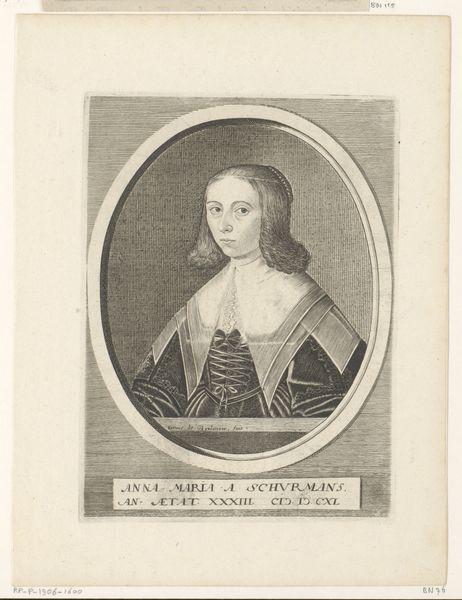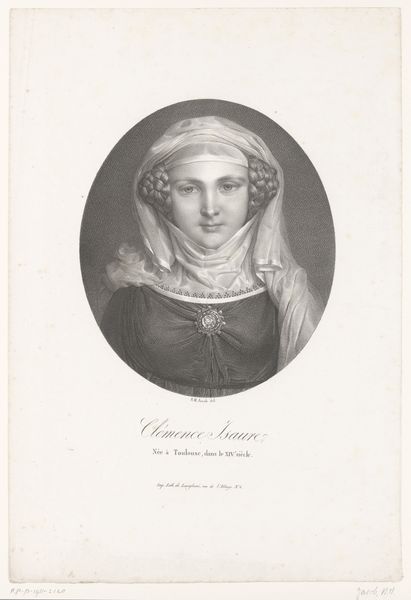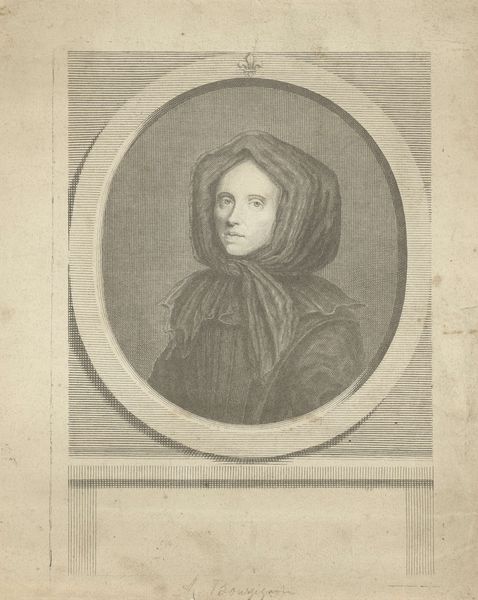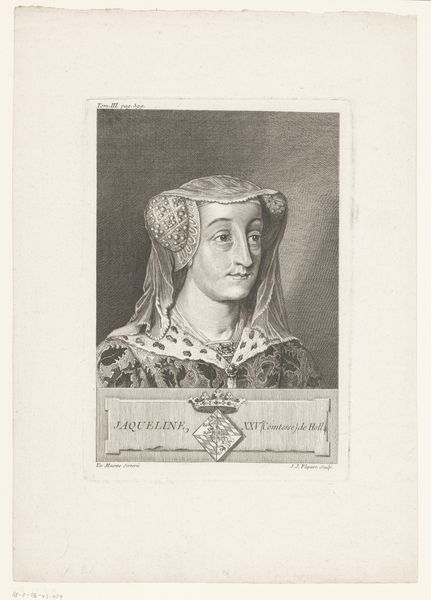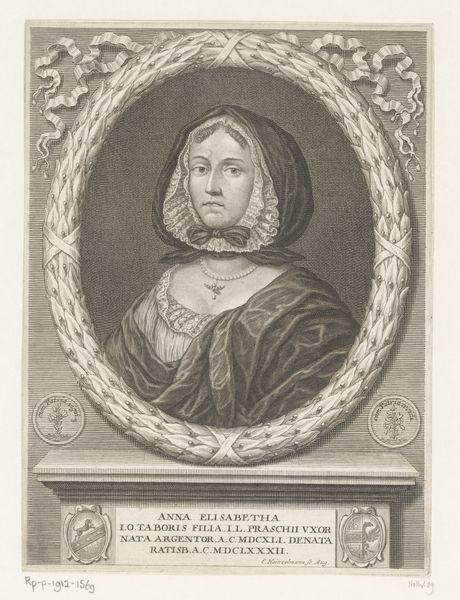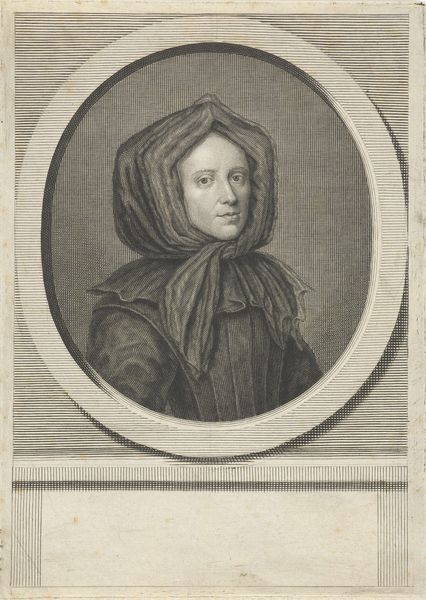
Portret van een onbekende vrouw in Chinese klederdracht 1745 - 1794
0:00
0:00
print, engraving
# print
#
old engraving style
#
pencil drawing
#
orientalism
#
genre-painting
#
engraving
#
rococo
Dimensions: height 152 mm, width 112 mm
Copyright: Rijks Museum: Open Domain
Editor: So, here we have "Portret van een onbekende vrouw in Chinese klederdracht," dating roughly from 1745 to 1794, made by Richard Purcell. It’s an engraving, giving it this delicate, almost ethereal quality. It is labelled "Chinese Lady". I'm curious about how the artist used readily-available techniques to produce the print and if its success speaks to a consumer need or curiosity. What’s your take on it? Curator: Well, given my perspective, I immediately consider the production of this engraving and the availability of similar prints. Engravings like this weren't simply artistic expressions; they were commodities. Think about the labor involved – the engraver, the printer, the distribution network. How did this print's material existence intersect with societal perceptions and desires regarding 'exotic' cultures during that time? Editor: That makes sense. It wasn't just about the image, but the whole production chain and how it met the market demands, the so called orientalism. Do you think the materials used—the paper, the ink—played a role in shaping how people viewed the subject? Curator: Absolutely. The relatively accessible nature of printmaking meant this image, and others like it, could circulate widely, influencing and reinforcing perceptions of Chinese culture. The materiality allowed for the creation and spread of stereotypes, perhaps fueled by trade relations and colonial aspirations. Is this orientalism being consumed by specific middle-class individuals or perhaps used in education to facilitate worldliness and understanding? Editor: Interesting. It seems almost like mass production in its early stages! Thinking about it in terms of consumption really changes how I see the image. Curator: Exactly! The object itself becomes evidence of broader economic and social forces at play. Considering its creation and spread, it gives context to cultural exchanges. Editor: Thanks. I’ll definitely look at art with a more material eye from now on! Curator: And I’ll be more thoughtful about prints and the consumption of culture.
Comments
No comments
Be the first to comment and join the conversation on the ultimate creative platform.
